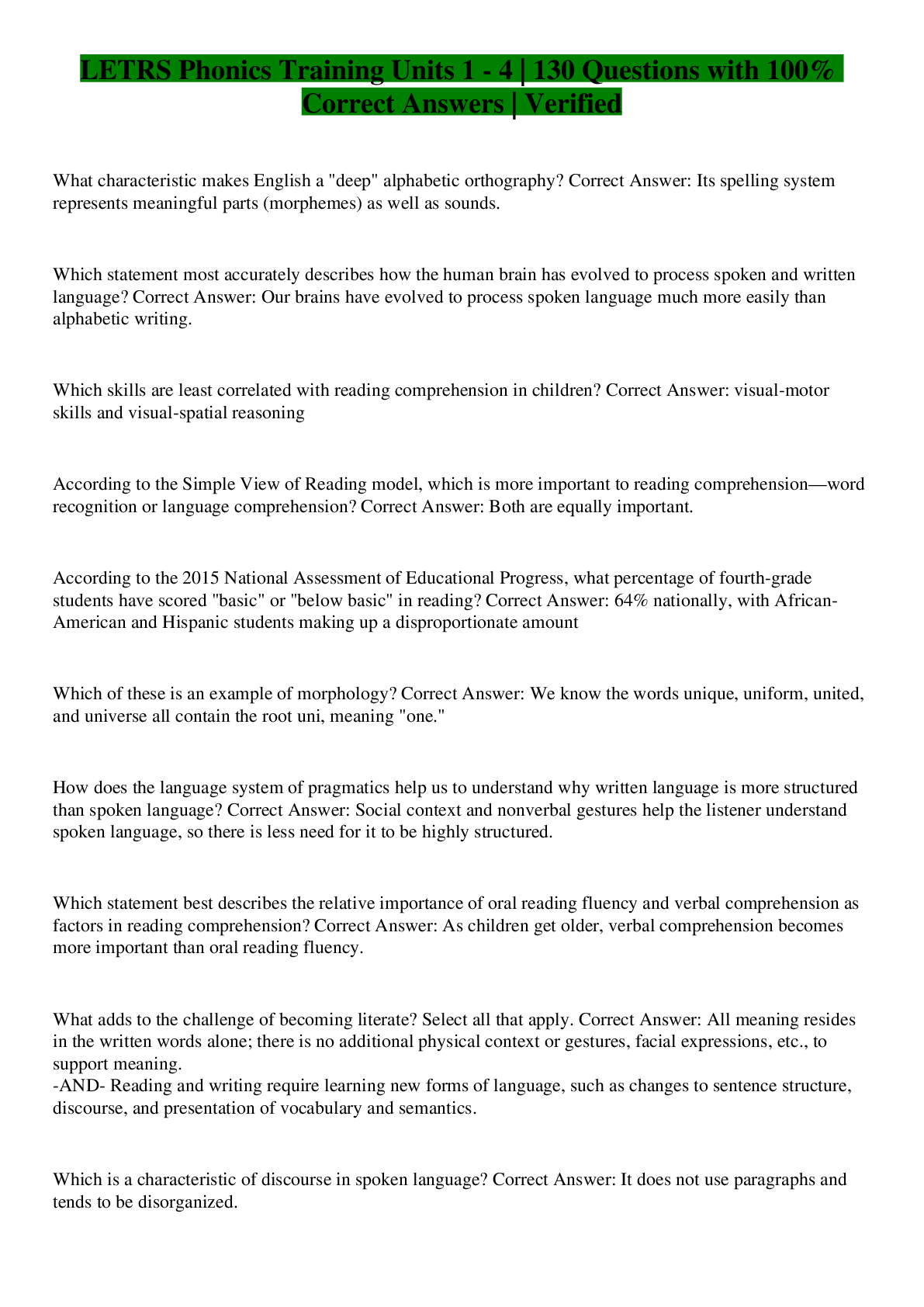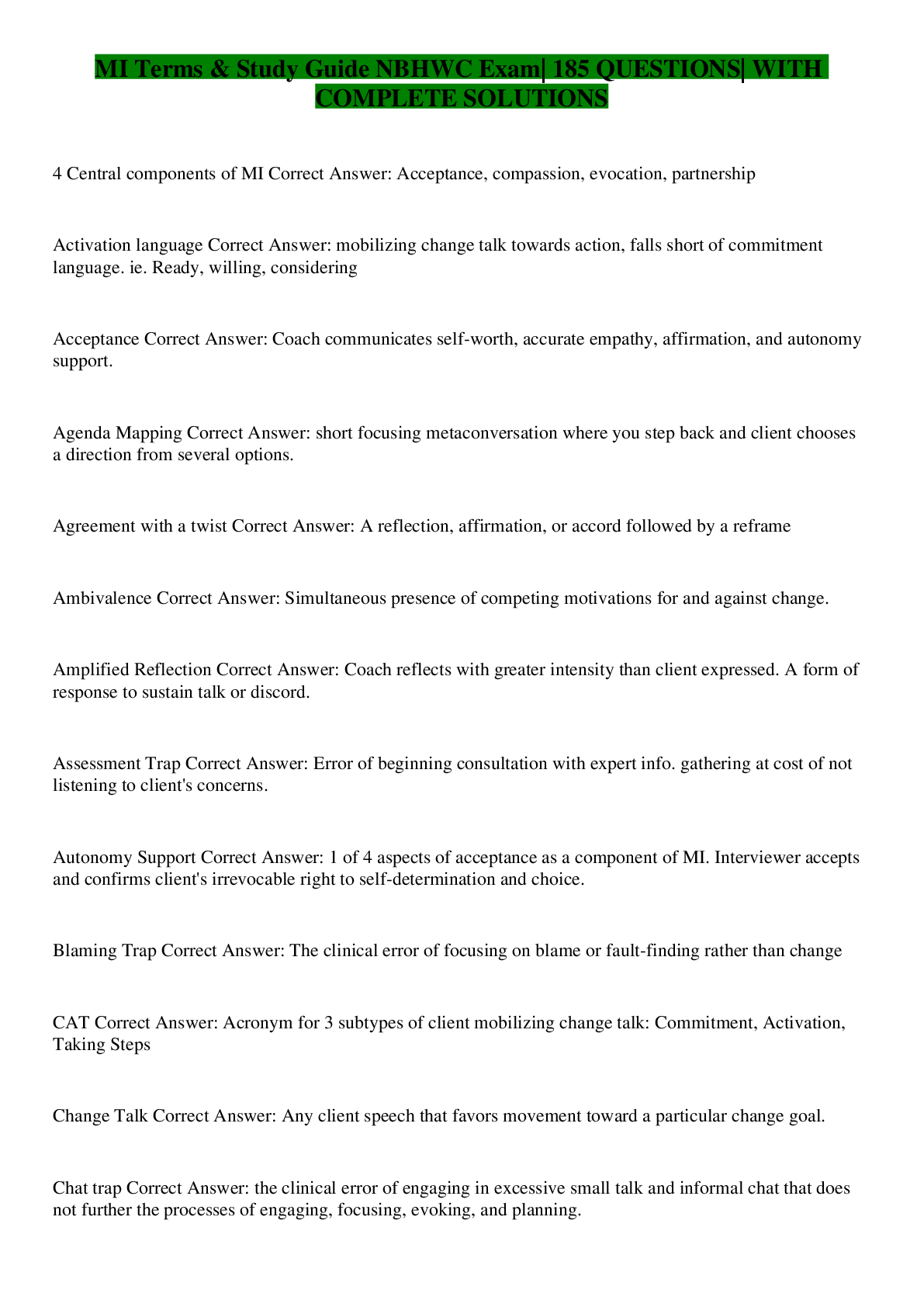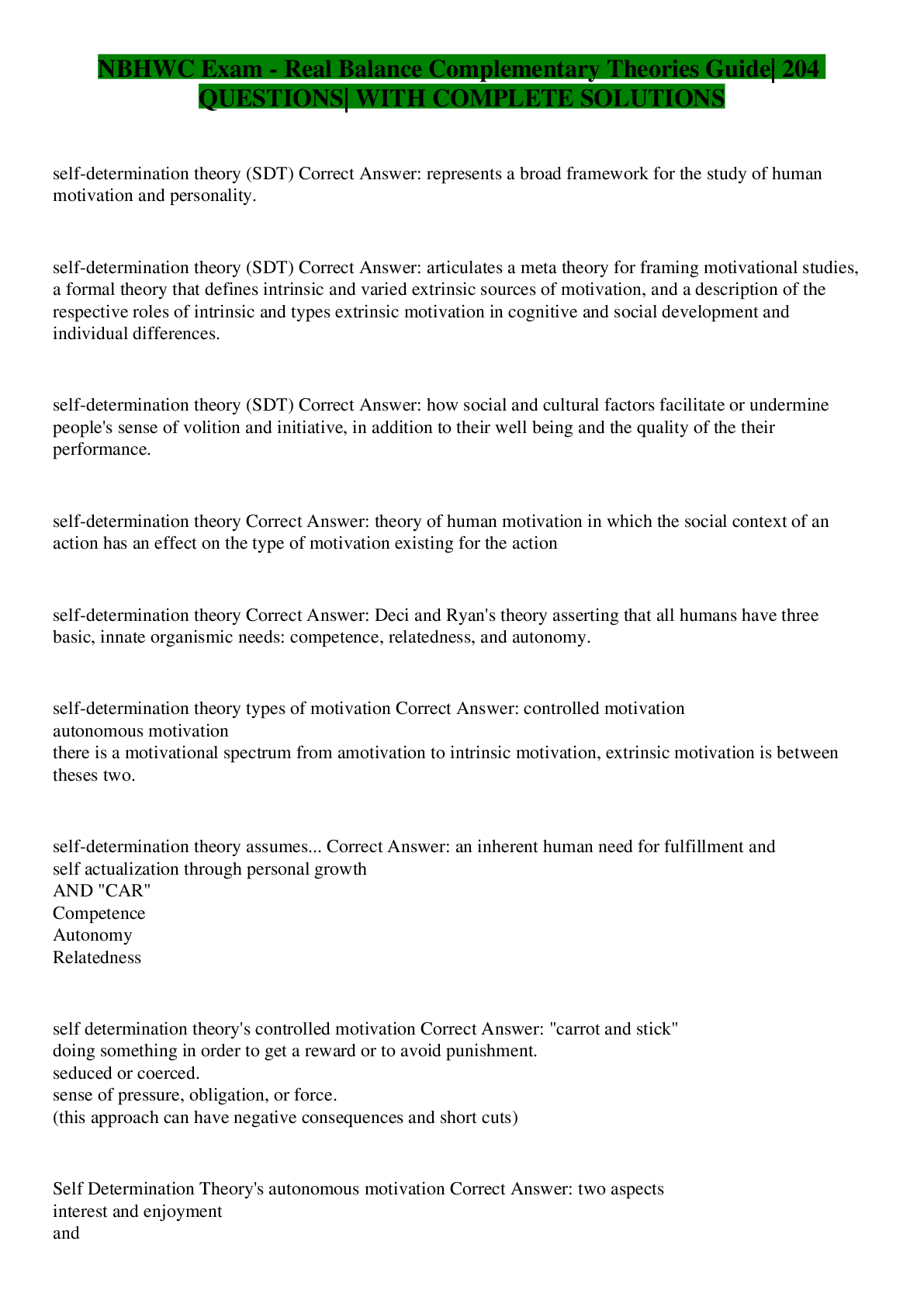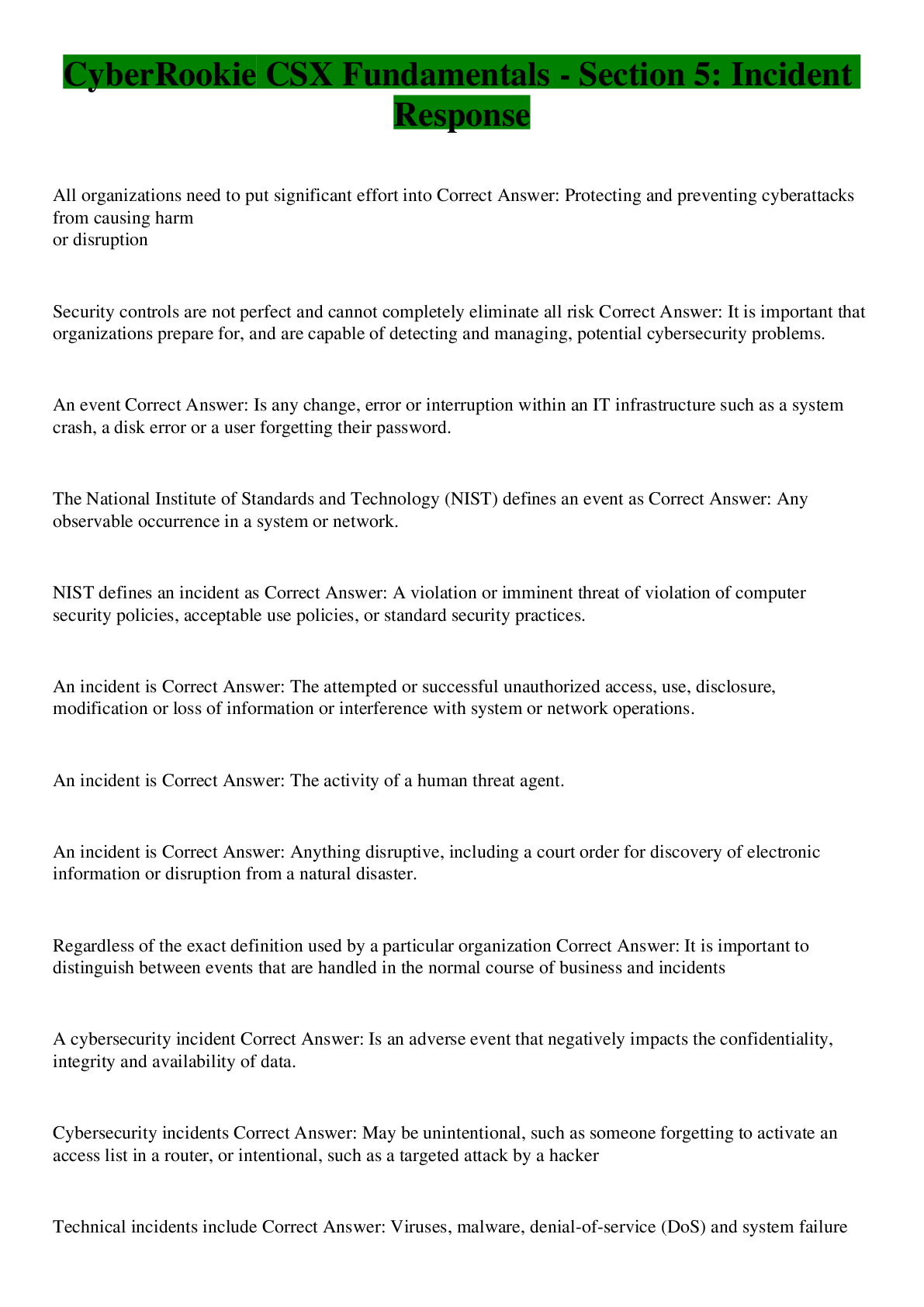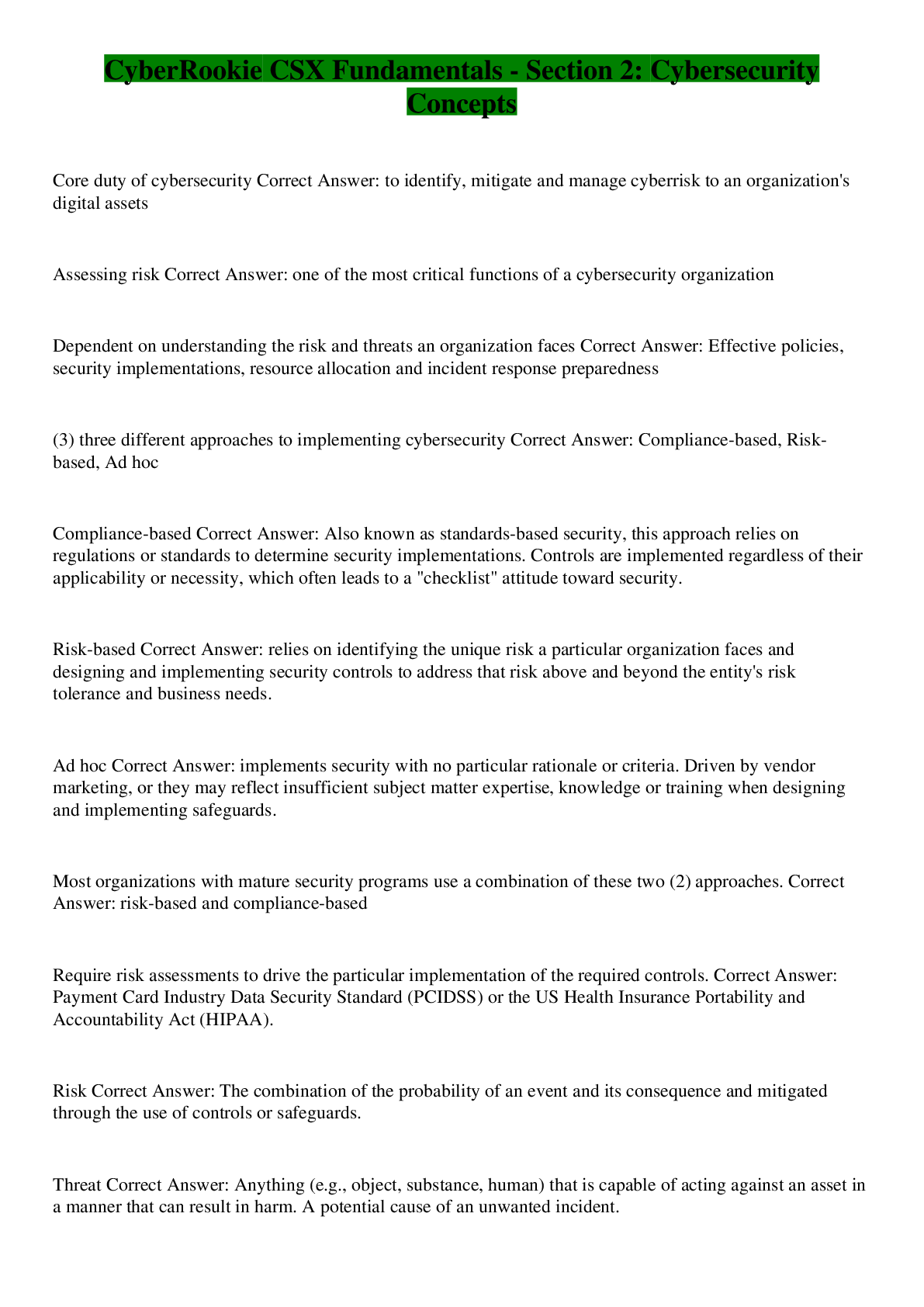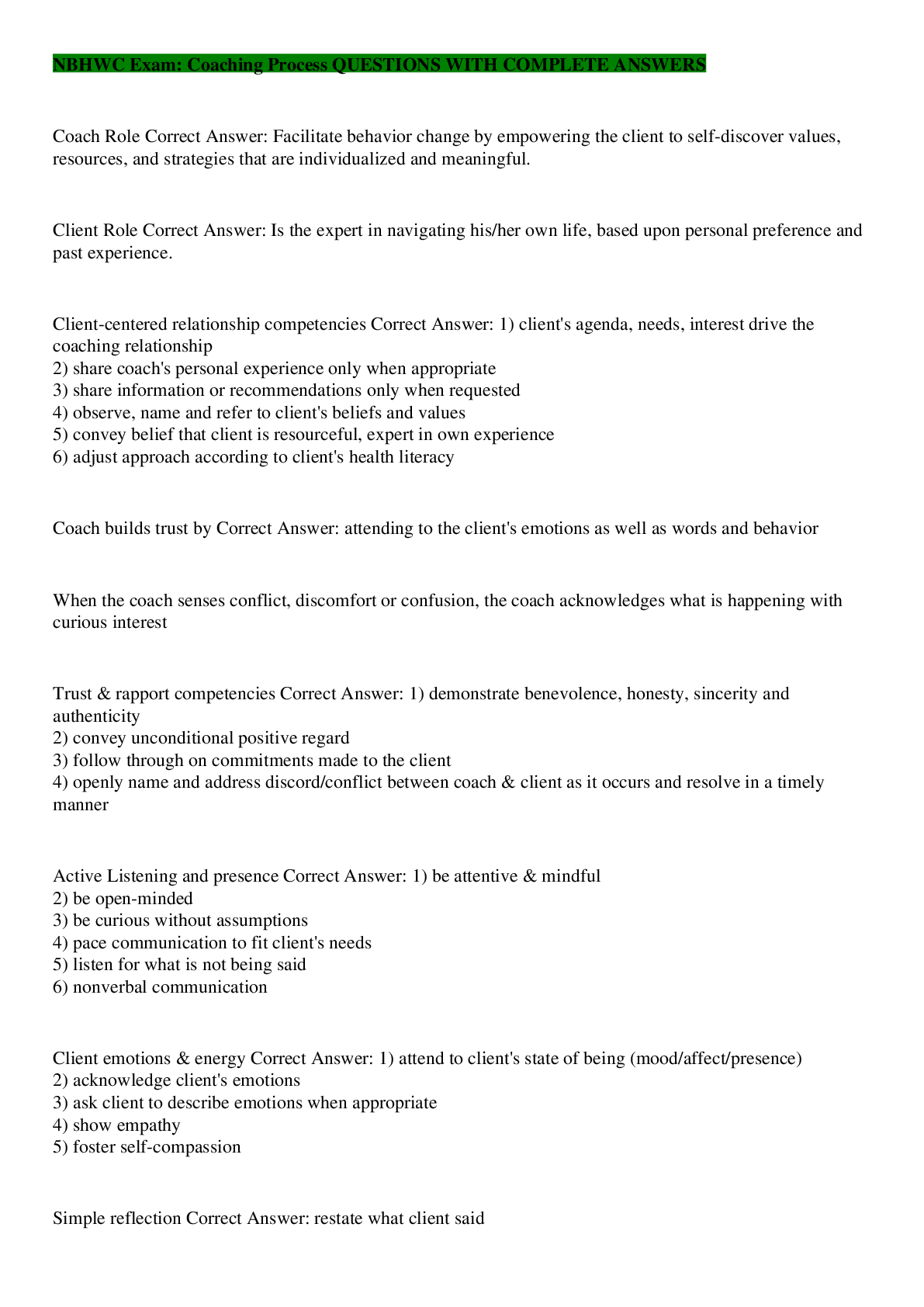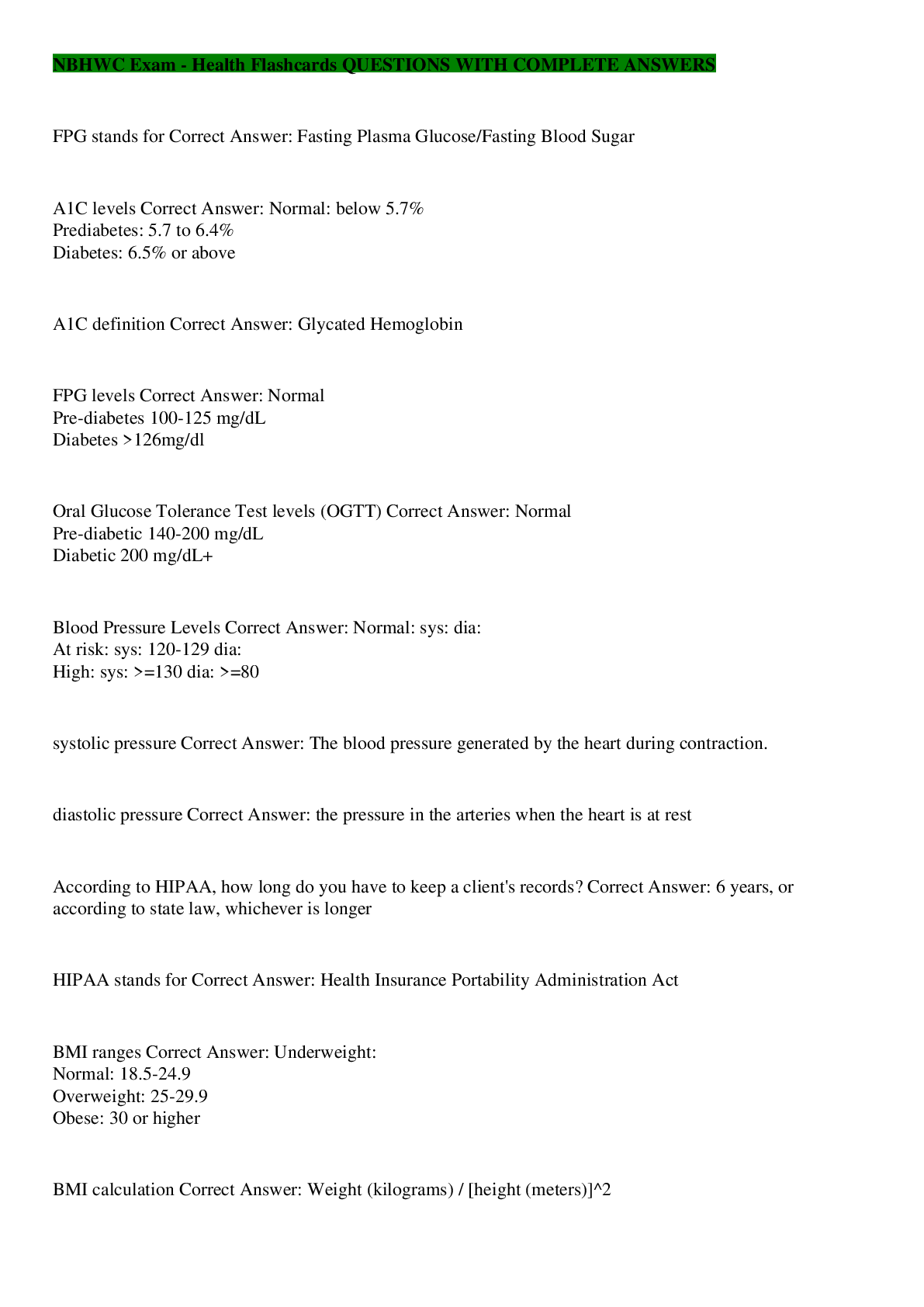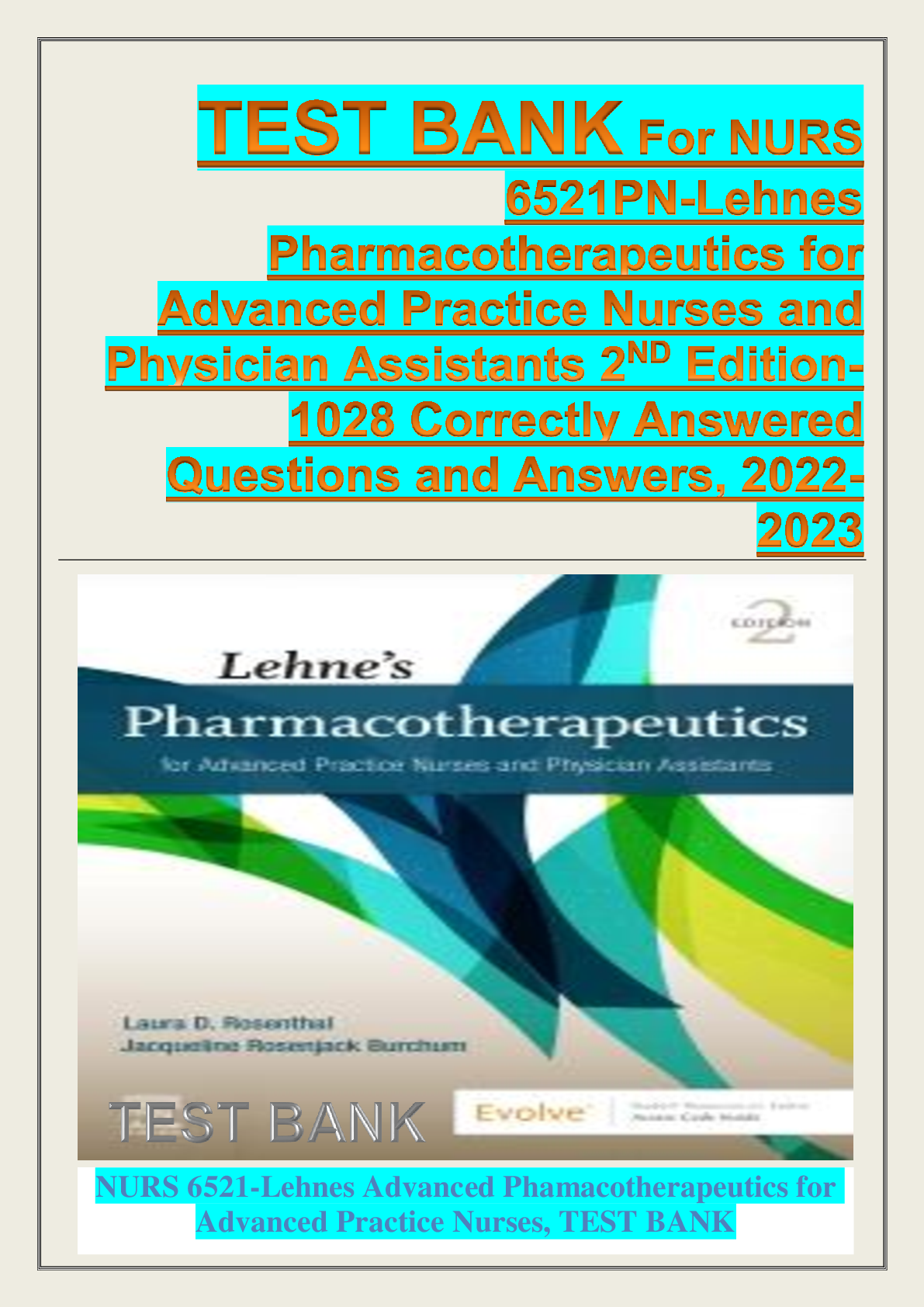Health Care > EXAM > Module 1 health promotions for advance practice nurses (All)
Module 1 health promotions for advance practice nurses
Document Content and Description Below
Module 1 health promotions for advance practice nurses Levels of prevention: Primary Answer- Prevents the disease or condition from occurring. measures that come before the onset of illness... or injury and before the disease process begins. Examples include immunization and taking regular exercise to prevent health problems developing in the future. Levels of prevention: Secondary Answer- Screening asymptomatic individuals for disease to detect it early, and with early intervention achieve a better outcome than with later detection and treatment. For example, a Papanicolaou (Pap) smear is a form of secondary prevention aimed to diagnose cervical cancer in its subclinical state before progression. Levels of prevention: Tertiary Answer- Implemented after a disease or condition is evident and are carried out to limiting further harm and disability. cardiac or stroke rehabilitation programs, chronic disease management programs (e.g. for diabetes, arthritis, depression, etc.) support groups that allow members to share strategies for living well. Levels of prevention: Primordial Answer- More along the lines of impacting the community Example: Truth.com with the aim at the community for no smoking. Theory Answer- Supposition or system of ideas intended to explain something, especially on general principals independent of the thing to be explained. No right or wrong theory for health promotion. Theory should match the individual or community Social ecological model (SEM): Answer- It is derived from social ecology. It believes that people cannot act in isolation and that we are influenced by our beliefs and society (internal and external factors). It is multi factorial and has five levels. 1. Intrapersonal level 2. Interpersonal level 3. Organization 4. Community 5. Policy Health belief model (HBM) Answer- psychological health behavior change model developed to explain and predict health-related behaviors, particularly in regard to the uptake of health services. The constructs of this model are perceived susceptibility, perceived benefits, perceived barriers, cue to actions, and self-efficacy. Theory designed to exclusively predict health behaviors based on the constructs of perceived susceptibility, perceived severity, perceived benefits, perceived costs, cues to action, and self- efficacy The trans-theoretical model (TTM): Answer- Individuals move through six stages of change; it is a process of change. These stages are: 1.Precontemplation: Not ready for change yet. 2.Contemplation: Getting ready for change 3. Preparation: Ready for change 4. Action: Changing 5. Maintenance: Action sustained for at least six months to prevent relapse. 6. Relapse Describes phases that people go through andmechanisms that people use when they adopt/modify/eliminate health behaviors Social cognitive theory (SCT) Answer- explores how a person's goals, expectations and self-efficacy are shaped by the social context in which they live. Main conditions that affect health behavioral change are personal goals, positive outcomes, and self-efficacy or collective efficacy. How to encourage changes are to facilitate change by providing resources or tools and observational learning by role modeling the change, incentive motivation, and self-regulation. attempts to explains what underlies human behaviour, and how human behaviour change can be brought about. Which change represents the primary impetus for the end of the era of the female lay healer? 1. Perception of health promotion as an obligation 2. Development of a clinical nurse specialist position statement 3. Foundation of the American Association of Nurse-Midwives 4. Emergence of a medical establishment Answer- 4. This is correct. The emergence of a male medical establishment represents the primary impetus for the end of the era of the female lay healer. Whereas lay healers viewed their role as being a function of their community obligations, the emerging medical establishment viewed healing as a commodity. The era of the female lay healer began and ended in the 19th century. The American Association of Nurse-Midwives (AANM) was founded in 1928. The American Nurses Association (ANA) position statement on educational requirements for the clinical nurse specialist (CNS) was developed in 1965; the ANA's position statement on the role of the CNS was issued in 1976. The beginning of modern nursing is traditionally considered to have begun with which event? 1. Establishment of the first school of nursing 2. Incorporation of midwifery by the lay healer 3. Establishment of the Frontier Nursing Service (FNS) 4. Creation of the American Association of Nurse-Midwives (AANM) Answer- 1. This is correct. Traditionally, modern nursing is considered to have begun in 1873, when the first three U.S. training schools for nurses opened. The role of the lay healer as a midwife is documented to have occurred in the 19th century, before the establishment of schools of nursing. The Frontier Nursing Service (FNS), which provided nurse-midwifery services, was established in 1925. In 1928, the Kentucky State Association of Midwives, which was an outgrowth of the FNS, became the American Association of Nurse-Midwives (AANM). 3. In 1910, which factors most significantly influenced the midwifery profession? Select all that apply. 1. Strict licensing requirements 2. Negative public perception 3. Dedicated funding for training 4. Poor maternal-child outcomes 5. Mandatory professional supervision Answer- 2, 4. This is correct. In 1910, the midwifery profession was significantly influenced by poor maternal-child outcomes and a public perception as unprofessional. At that time, approximately 50% of all U.S. births were reportedly attended by midwives. However, especially with regard to perinatal health indicators, the national population's general health was poor. Unfavorable outcomes among both mothers and infants were attributed to midwives who, at that time, were largely unregulated and generally perceived as unprofessional. Poor maternal- child outcomes, negative perceptions of midwives, obstetricians' targeted efforts to take control of the birthing process, and a movement away from home births prompted major changes. Legislation was passed to tighten requirements related to licensing and supervision of midwives. One aim of the Sheppard-Towner Maternity and Infancy Act involved allotting funds to train public health nurses in midwifery; however, the bill lapsed in 1929. 4. Which advanced practice nursing role is unique in that the practitioners view their role as comprising a combination of two distinct disciplines? 1. Nurse practitioner 2. Certified registered nurse anesthetist 3. Clinical nurse specialist 4. Certified nurse-midwife Answer- 4. This is co [Show More]
Last updated: 1 year ago
Preview 1 out of 21 pages
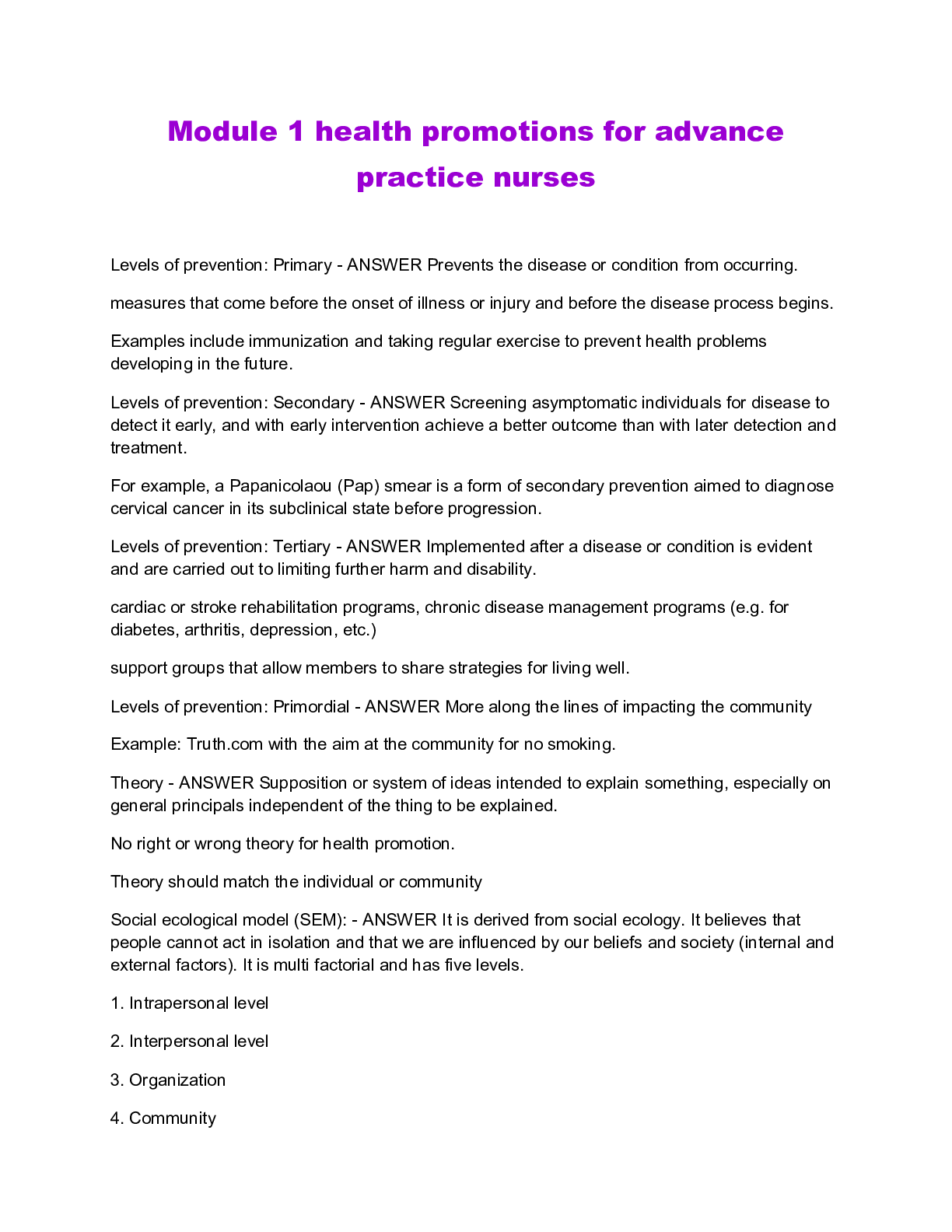
Buy this document to get the full access instantly
Instant Download Access after purchase
Add to cartInstant download
We Accept:

Reviews( 0 )
$10.00
Document information
Connected school, study & course
About the document
Uploaded On
Sep 15, 2022
Number of pages
21
Written in
Additional information
This document has been written for:
Uploaded
Sep 15, 2022
Downloads
0
Views
34


